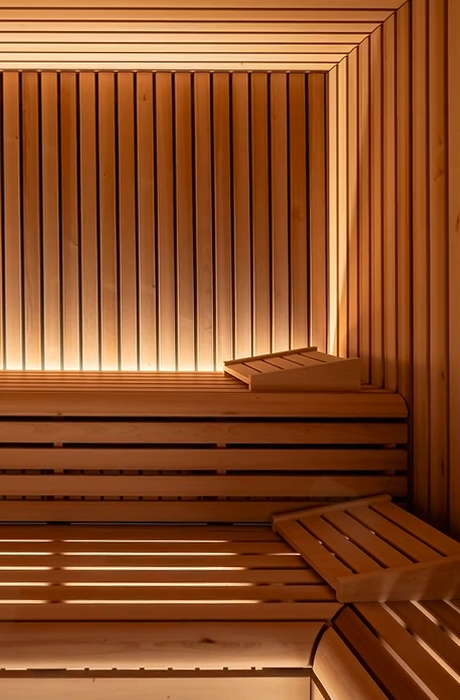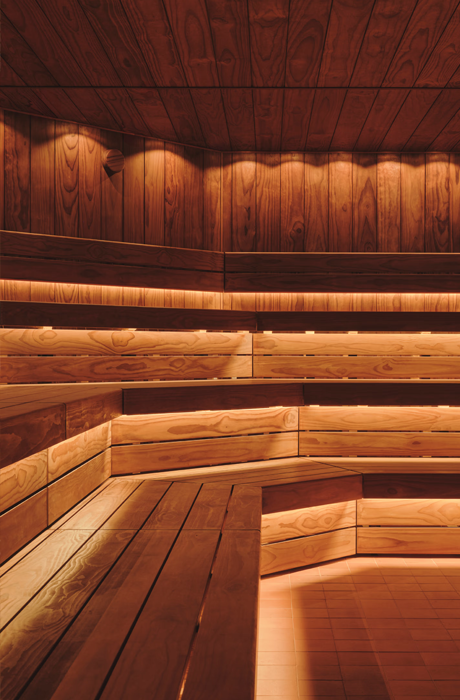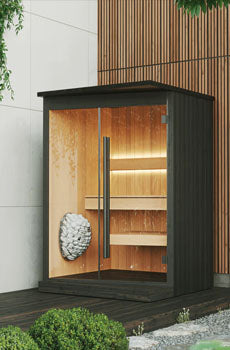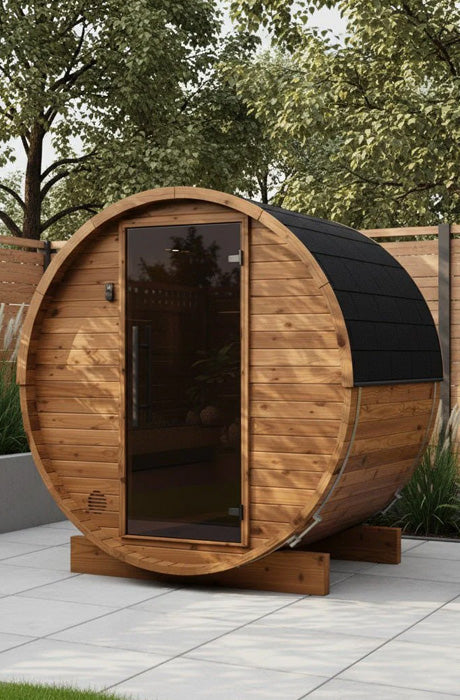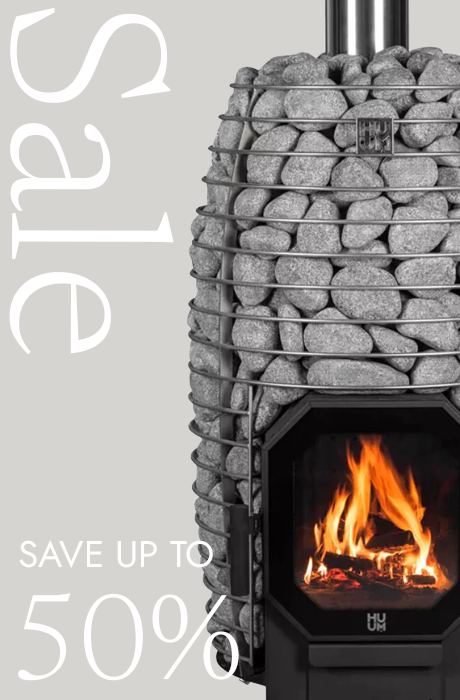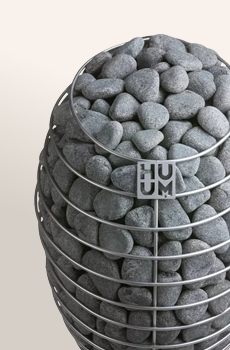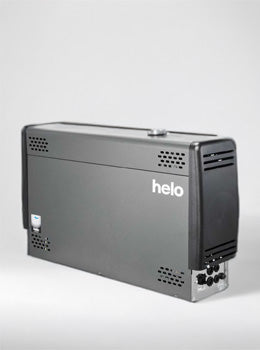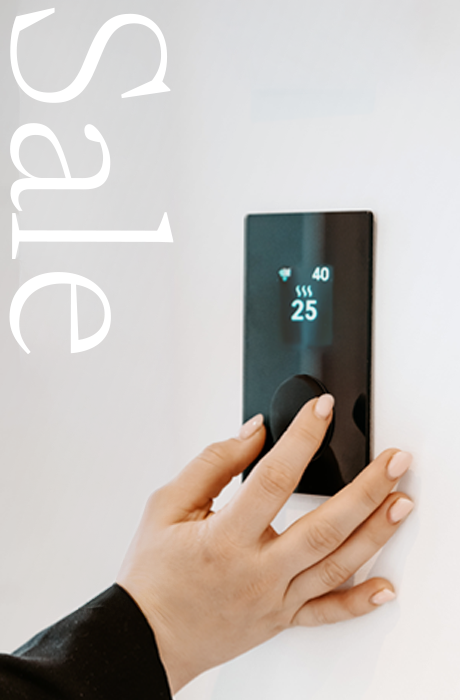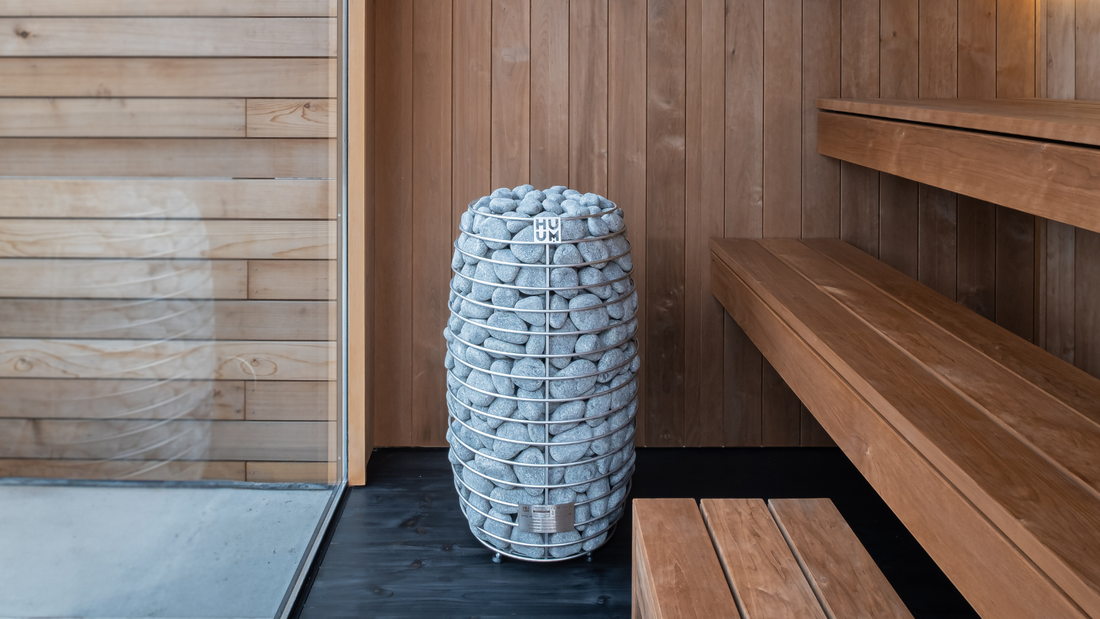
Cost Of Running An Electric Sauna Heater | Comprehensive Guide
The rising energy costs have lately become a concern for many. The expenses of gas and electricity raise questions about home saunas. What exactly are the costs of a home sauna, and how much should you expect to spend on running an electric sauna heater?
We have outlined a comprehensive guide on what factors affect the charges of your sauna and how you can make your bathing routine more energy-efficient.
In this guide:
-
Understanding Electric Sauna Running Costs
-
The running costs of your sauna heater will depend on
-
How to calculate sauna running costs
-
Factors affecting sauna energy consumption
-
How to save on the running costs of your sauna
-
Wood Burning or Electric Sauna Heater?
-
Climate and location considerations
-
Comparing sauna costs to other household appliances
Understanding Electric Sauna Running Costs
Electric sauna heaters have become increasingly popular for home wellness spaces due to their convenience and ease of use. Understanding the true cost of running an electric sauna is essential for budgeting and making informed decisions about your home sauna investment.
The monthly expenses for operating an electric sauna in the UK typically vary between £15 and £53, influenced by factors such as the sauna's type, size, and frequency of use. Most domestic home saunas that sit 4-6 people run on an electric heater between 6kW-9kW.
For many homeowners considering a sauna installation, the running costs often seem like a daunting unknown. However, when you break down the numbers and compare them to other household expenses, the reality is far more manageable than most people anticipate.
The key to controlling these costs lies in understanding the variables that affect energy consumption and making informed choices about your sauna type, usage patterns, and maintenance routines.
Unlike many home improvements that offer purely aesthetic value, a sauna provides tangible health benefits alongside a reasonable operating cost, making it an investment that pays dividends in both wellness and quality of life.
The running costs of your sauna heater will depend on:
Understanding what drives your sauna's energy consumption is the first step toward managing costs effectively. Multiple interconnected factors work together to determine how much you'll spend each month on your home sauna.
From the physical characteristics of your sauna space to your personal usage habits, each element plays a role in the final calculation. By recognising these variables early in your planning process, you can make strategic decisions that optimise both performance and affordability.
Key Cost Factors
-
The size of the sauna - Larger saunas require more powerful heaters and consume more energy.
-
The quality of insulation in the space is crucial, as poor insulation leads to significant heat loss and increased energy consumption.
-
How long you use the sauna for - Session duration directly impacts energy costs.
-
The temperature of the sauna - Higher temperatures require more energy to maintain.
-
Your electricity tariff - Variable rates can significantly affect monthly costs.
-
Frequency of use - Daily users will see higher costs than occasional users.
How to Calculate Sauna Running Costs
One of the most common questions from prospective sauna owners is simply: "How much will this actually cost me each month?" Fortunately, calculating your sauna's running costs doesn't require complex mathematics or an engineering degree.
With a straightforward formula and an understanding of your local energy rates, you can estimate your monthly expenses with surprising accuracy. This transparency allows you to budget confidently and make informed decisions about your usage patterns from day one.
Again, these figures throughout the article are based on estimations, but will enable you to work out the costs that are applicable to you and your home.
Current UK Energy Prices (2025)
The monthly figure will naturally depend on how much your electricity provider charges per single kW hour. As of April 2025, the Ofgem energy price cap is set at 27.03 pence per kWh (April 1 - June 30, 2025).
Simple Calculation Formula
Assuming an average £0.27 per kWh and a 9kW heater, the heater will use 9kW x £0.27 during the first hour and roughly around half of that thereafter.
Basic Formula:
Heater kW × Price per kWh × Duration of Session × Number of Sessions per Month = Monthly Cost
Example Calculation for One Sauna Session
Based on £0.27 per kW hour and a 1.5-hour sauna session with a 9kW heater:
Understanding how your sauna heater operates is key to calculating costs accurately. During the first 45-60 minutes, your heater runs at 100% power whilst everything is heating up to the desired temperature.
Once at temperature, the heater is thermostatically switched on and off to maintain the temperature thereafter. An average sauna with reasonable insulation and good ventilation, therefore, operates at circa 50% efficiency during this maintenance phase.
This percentage of operating time that a device is active for is known as the "duty cycle."
First hour (full power): 9kW × £0.27 = £2.43.
Additional 30 minutes (reduced power): 4.5kW × £0.27 × 0.5 = £0.61.
Total per session: Approximately £3.04.
Or expressed as a single formula: (1 + 0.5 × 0.5) × 9kW × £0.27 = £3.04.
Monthly cost (3 sessions per week): £3.04 × 12 = £36.48 per month
Detailed Cost Breakdown by Heater Size
|
Heater Size |
Session Duration |
Cost per Session |
Weekly Cost (3x) |
Monthly Cost |
|
6kW |
1.5 hours |
£2.03 |
£6.09 |
£24.36 |
|
9kW |
1.5 hours |
£3.04 |
£9.12 |
£36.48 |
|
10.5kW |
1.5 hours |
£3.54 |
£10.62 |
£42.48 |
Factors Affecting Sauna Energy Consumption
Not all saunas consume energy at the same rate, even when they appear similar in size and design. The reality is that numerous environmental, structural, and operational factors combine to create your sauna's unique energy profile. Understanding these influences empowers you to make choices that significantly reduce your long-term costs without compromising your sauna experience.
Whether you're planning a new installation or looking to optimise an existing sauna, addressing these factors can lead to substantial savings over the lifetime of your investment.
1. Geographical Location and Climate
Your location plays a significant role in sauna running costs. If you live in a colder climate, it can take more energy to bring your sauna to the desired temperature. This is particularly true for outdoor saunas, where the surrounding air temperature can dramatically affect heating time and energy consumption.
Climate Impact:
-
Cold climates: Outdoor saunas may take longer to heat and consume 20-30% more energy.
-
Warm climates: Energy consumption is lower as the sauna needs less time to heat up.
-
Indoor vs. outdoor: Indoor saunas are generally more energy-efficient, regardless of climate, due to protection from external temperature fluctuations.
2. Insulation Quality
Well-insulated saunas reduce energy consumption by minimising heat loss. Good insulation keeps all that precious heat trapped inside, which reduces how hard your sauna heater has to work to maintain your desired temperature. Think of insulation as the foundation of energy efficiency; without it, you're essentially heating the outdoors rather than your sauna space.
The difference between a well-insulated sauna and a poorly insulated one can mean the difference between £25 and £45 in monthly running costs, making it one of the most impactful factors in your long-term expenses.
Key Insulation Factors:
-
Wall thickness and material quality.
-
Door seal integrity.
-
Roof insulation effectiveness.
-
Floor insulation.
-
Window quality (single-glazed versus double/triple-glazed windows)
Check for gaps in the door seal or inadequate wall insulation, as these can drive up energy use by 25-35%.
3. Sauna Type and Design
Different sauna types have varying energy requirements, and understanding these differences is crucial when making your purchasing decision. The type of sauna you choose will fundamentally shape your monthly running costs and overall experience.
Traditional electric saunas offer the classic Finnish experience with consistent high heat. Although there are other options that people choose from, such as Infrared and Steam Saunas, Finnmark recognises the importance of creating an authentic sauna experience using a traditional sauna heater, whether electric or wood-burning.
Traditional Electric Saunas:
-
Use 6-14 kWh per session.
-
Require preheating time of 40-60 minutes.
-
Maintain consistent high temperatures.
4. Heater Type and Efficiency
The type of heater you choose significantly impacts energy consumption. Modern heaters often come with improved features that reduce overall electricity usage. When shopping for a sauna heater, it's easy to focus solely on the upfront cost, but the design features will affect your wallet for years to come.
A heater with superior efficiency features can pay for itself within the first year through reduced energy bills. Modern technology has revolutionised sauna heating, introducing smart features that previous generations of sauna owners could only dream of; features that not only enhance convenience but genuinely reduce operational costs.
Modern Efficiency Features:
-
Smart thermostats with automatic temperature adjustment.
-
Energy-saving modes.
-
Quick heat-up technology.
-
Improved heating element design.
-
Timer controls.
How to Save on the Running Costs of Your Sauna
There are several effective ways to make your sauna sessions more energy efficient and reduce monthly running costs. The beauty of sauna ownership is that you don't need to sacrifice your experience to save money.
Small adjustments to your setup, maintenance routine, and usage patterns can compound into significant savings over time. Many sauna owners are surprised to discover that their running costs drop by 20-30% simply by implementing a few strategic changes that often enhance rather than diminish their overall satisfaction with their home sauna.
1. Choose the Correct Heater for the Size of Your Sauna
The size of your sauna will largely determine which electric sauna heater will be best for the space. An oversized heater wastes energy, while an undersized heater will struggle to reach the desired temperature efficiently.
Heater Sizing Guidelines:
-
Small saunas (2-3 people): 4.5-6kW
-
Medium saunas (4-5 people): 6-9kW
-
Large saunas (6+ people): 9-10.5kW
Use a sauna heating calculator to determine the optimal heater size for your specific sauna dimensions and insulation quality.
2. Keep the Sauna at Slightly Lower Temperatures
Keeping the sauna temperatures at 70-80 degrees Celsius can help lower the running costs significantly. These temperatures will provide a pleasant "löyly" experience and can save up to 30% when compared to bathing for an hour in 100 degrees Celsius heat. This is perhaps the single most effective cost-saving measure you can implement, and interestingly, many experienced sauna users actually prefer these moderate temperatures.
The current scientific consensus from research into the health benefits of saunas indicates that the optimal temperatures are 70-90°C. There is even emerging data suggesting that bathing in temperatures beyond 95°C may actually be detrimental to your health. Your body responds to the gradual warming effect, and the health benefits—from improved circulation to stress reduction—are fully realised at these moderate temperatures.
Temperature Optimisation:
-
70-80°C: Optimal balance of comfort and efficiency
-
85-90°C: Moderate energy consumption
-
95-100°C: Highest energy consumption
Most health benefits of a sauna can be achieved at 70-80°C, making lower temperatures both cost-effective and therapeutic.
3. Check Your Heater and the Sauna Stones at Least Once a Year
Old and degraded sauna stones waste energy, as they can damage the heating elements and prevent them from working efficiently. Regular maintenance ensures optimal performance and energy efficiency.
Many sauna owners overlook this simple maintenance task, not realising that their stones are quietly driving up their energy bills month after month. Sauna stones are the thermal heart of your sauna; they absorb heat during the warming phase and radiate it consistently throughout your session.
When stones degrade, crack, or crumble, they break down and settle into a tightly packed structure, which reduces airflow through the stones and heating elements. This restricted airflow means the heater cannot efficiently heat the air, forcing it to work harder and longer to maintain the desired temperature.
This not only increases your electricity costs but also accelerates wear on your heating elements, potentially leading to expensive repairs or replacements down the line.
Stone Maintenance Tips:
-
Replace stones annually or when they show signs of degradation.
-
Pile stones with small gaps between them for proper airflow.
-
Avoid piling stones too tightly, which restricts airflow and increases energy consumption.
-
Check for cracked or crumbling stones that reduce heat retention.
Proper maintenance and piling the stones correctly will save on the monthly bill and can reduce energy consumption by up to 15%.
4. Optimise Your Sauna Usage
Best Practices for Energy Efficiency:
-
Go to the sauna as soon as it has reached the desired temperature - Don't let it run unnecessarily.
-
Avoid excessive preheating - 20-40 minutes is generally sufficient for most saunas.
-
Use timers - Install automatic shut-off to prevent wasted energy.
-
Turn off immediately after use - Don't leave the heater running.
-
Shorter, consistent sessions - 30-45 minute sessions are cost-efficient while still providing full benefits.
-
Schedule during off-peak hours - Take advantage of lower electricity rates if available.
5. Maximise Energy Efficiency with Smart Technology
Smart Sauna Controls:
-
Smart controllers that learn the heating time and allow "ready at" functionality, so it is turned on at the right time to use minimum energy.
-
WiFi-enabled controls to preheat only when needed.
-
Automatic shut-off features.
-
Energy monitoring to track consumption.
6. Consider Session Duration and Frequency
How often and how long you use your sauna directly impacts your overall running costs. If you love spending an hour in your sauna each day, your energy consumption will naturally be higher than that of someone who uses it for 30 minutes three times a week.
Cost-Efficient Usage Patterns:
-
Shorter sessions (30-45 minutes): More cost-efficient, providing full health benefits.
-
Longer sessions (1 hour+): Higher energy consumption, especially with high-power heaters.
-
Frequent use: Daily use will noticeably increase monthly bills.
Usage Impact Examples:
-
3 times per week (45 min): £24-£36/month.
-
Daily use (45 min): £56-£84/month.
-
Daily use (1 hour): £75-£112/month.
Comparing Sauna Costs to Other Household Appliances
Understanding sauna running costs in context with other household appliances helps put the expense into perspective. When people first learn about sauna running costs, they often express surprise at how reasonable they are, especially when compared to other discretionary household expenses.
We tend to accept the costs of running air conditioning, tumble dryers, and electric ovens without question, yet scrutinise sauna costs with particular intensity. Perhaps this stems from viewing a sauna as a luxury rather than a wellness necessity.
However, when you examine the actual numbers, a sauna session costs roughly the same as running your clothes dryer twice or using your oven for an evening meal. The difference is that your sauna provides measurable health benefits with each use, making it less of an expense and more of an investment in your long-term well-being.
Energy Consumption Comparison
|
Appliance |
Energy Use |
Typical Cost per Use |
|
Electric Sauna (45 min) |
6-9 kWh |
£1.62-£2.43 |
|
Central Air Conditioning (1 hour) |
2-5 kWh |
£0.54-£1.35 |
|
Clothes Dryer (per load) |
2-3 kWh |
£0.54-£0.81 |
|
Dishwasher (per load) |
1.5 kWh |
£0.41 |
|
Electric Oven (1 hour) |
2-2.5 kWh |
£0.54-£0.68 |
Monthly Comparison: If your sauna runs for 45 minutes three times a week, its total energy consumption could amount to around 20-30 kWh monthly, which costs approximately £5.40-£8.10.
When viewed in this context, sauna costs are relatively manageable, particularly if you're mindful of your usage habits and comparable to running other common household appliances regularly.
Wood Burning or Electric Sauna Heater?
For many sauna enthusiasts, the choice between wood burning and electric heaters is about more than just running costs; it's about the overall experience and lifestyle fit. This decision often sparks passionate debates among sauna purists and modern wellness enthusiasts alike. Some argue that without the crackle of burning wood and the ritual of fire-tending, you're missing the soul of the sauna experience.
Others counter that convenience and consistency matter more in today's busy world, where finding time for wellness practices is challenging enough without adding labour-intensive preparation. The truth is that both perspectives have merit, and the right choice depends entirely on your personal circumstances, values, and vision for your sauna practice.
Wood Burning Sauna Heaters: The Traditional Choice
Wood-burning sauna heaters are considered by many to be the real deal, offering an authentic Finnish-style sauna experience. The crackling of the fire, the scent of burning wood, and the slow, steady increase in heat all contribute to a deeply relaxing and immersive sauna session.

Benefits of Wood Burning Stoves:
Authentic & Rustic Experience
-
Traditional charm and connection to nature.
-
The soothing crackling sound adds to relaxation and stress-reducing health benefits.
-
The ritualistic process of tending the fire provides a mindfulness opportunity.
-
Natural ambience with flames and wood aroma.
Heat Quality
-
Larger stone capacity (50kg-100kg+) compared to electric heaters.
-
Softer, more enveloping heat that many enthusiasts prefer.
-
Allows for more humid sauna sessions with better "löyly".
-
Heat feels less artificial, with greater depth.
-
Longer-lasting warmth even after the fire burns out.
Operating Independence
-
No electricity required - perfect for remote locations or off-grid cabins.
-
Continues working during power outages.
-
Renewable heating method when firewood is sustainably sourced.
Design Flexibility
-
More spacious designs are possible.
-
Great for social experiences and family gatherings.
-
It can be customised with different stove styles.
Long-term Costs
-
It may be more economical if you have access to affordable firewood.
-
Sauna stones require checking once a year.
-
Ash pan should be emptied after every use, while the chimney needs sweeping once a year.
-
Regular cleaning of ash from airways within the stove to maximise efficiency and longevity. Too much ash buildup can lead to overheating and the melting of components in the heater.
-
No electrical components to fail or replace.
Wood Burning Sauna Running Costs
The cost of running a wood-burning sauna depends heavily on your access to firewood:
Per Session Costs:
-
Approximately 1-1.5 bags of kiln-dried wood per session.
-
£4-£6 per bag.
-
Total: £6-£9 per 2-3 hour session.
Monthly Costs (twice weekly use):
-
£48-£72 per month.
Important Considerations:
-
Only use kiln-dried wood with a moisture content below 20% (UK legal requirement)
-
Birch or Spruce logs are recommended for optimal heat and aroma.
-
Beech and ash are alternatives with different burning properties - hardwood often burns at a hotter temperature, so be careful of overheating the stove.
-
Damp logs with a moisture content exceeding 20% will produce excessive smoke and are now illegal to purchase and burn.
Important Considerations for Wood Burning Stoves
Before choosing a wood-burning sauna heater, consider:
1. Smoke-Free Zone Regulations
-
Check with the local authority if your area is a smoke-free zone.
-
Currently, there are no DEFRA-approved wood-burning sauna stoves in the UK.
-
Smokeless fuels are not suitable for sauna stoves (burn too hot, risk damage)
-
If in a smoke-controlled area, electric may be your only legal option.
2. Installation Requirements
-
Requires chimney/flue kit installation.
-
Larger safety distances to combustible materials compared to electric heaters.
-
Flue outlet and safety distances must be carefully planned.
-
Always consult a HETAS BS EN 15821:2010 qualified engineer for installation.
-
Higher initial installation costs.
3. Maintenance
-
More hands-on maintenance is required.
-
Regular ash removal.
-
Chimney cleaning and inspection.
-
Wood storage and preparation are needed.
-
More time-intensive than electric options.
Electric Sauna Heaters: Modern Convenience
The popularity of electric sauna heaters has risen in the modern world, where time and space in domestic settings are limited, and it's not always easy to source suitable firewood. Electric saunas represent the evolution of sauna technology, adapting an ancient practice to contemporary lifestyles without sacrificing the core benefits.
For the busy professional who wants to enjoy a morning sauna before work or the parent who needs to fit wellness around family schedules, electric heaters offer unparalleled flexibility. You can literally decide to have a sauna session and be enjoying the heat within 30 - 60 minutes, no wood splitting, fire building, or extended preparation required.
This convenience factor has made home saunas accessible to a much broader audience, bringing the health benefits of regular sauna use to people who simply couldn't commit to the time demands of traditional wood-fired systems.

Benefits of Electric Heaters:
Convenience & Ease of Use
-
Instant heat at the push of a button.
-
Heats up in 40-60 minutes, depending on the setting.
-
Precise temperature control with digital thermostats.
-
It can be controlled via smartphone apps.
-
Timer functions for automatic operation.
-
No wood chopping, carrying, or storage required.
Installation Simplicity
-
No chimney or flue required.
-
Easier installation process.
-
Suitable for urban environments.
-
Compact designs fit smaller spaces.
-
It can be installed indoors or outdoors.
-
Lower initial installation costs.
Predictable Costs
-
Consistent, calculable monthly expenses
-
£24-£36 per month for regular use (3x weekly)
-
No variable fuel costs
-
Easy to budget and plan expenses
Low Maintenance
-
Minimal cleaning requirements.
-
No ash removal.
-
No chimney sweeping.
-
Annual stone check is primary maintenance.
-
Clean and mess-free operation.
Safety Features
-
No open flames - safer for households with children or pets.
-
Automatic shut-off features.
-
Overheat protection.
-
Consistent, controlled temperatures.
Ideal for Frequent Use
-
Perfect for daily sauna routines.
-
On-demand heating for busy lifestyles.
-
It can be used morning and evening without preparation time.
Modern Design
-
Sleek, contemporary aesthetics.
-
Blends with minimalist home design.
-
Various style options are available.
-
Suitable for integrated wellness spaces.
Cost Comparison: Wood Burning vs Electric
Running Costs (based on 3 sessions per week):
-
Wood Burning: £48-£72 per month.
-
Electric (9kW): £36-£40 per month.
-
Electric (6kW): £24-£30 per month.
At current energy prices (April 2025), electric and wood-burning saunas have comparable running costs. The choice depends more on lifestyle, location, and personal preference than cost alone.
Which Should You Choose?
Choose Wood Burning If:
-
You want an authentic, traditional sauna experience.
-
You live in a non-smoke-controlled area.
-
You have access to affordable, sustainable firewood.
-
You enjoy the ritual of fire-tending.
-
You have an off-grid or rural location.
-
You prefer natural ambience and longer sessions.
-
You have space for wood storage.
-
You're willing to invest time in maintenance.
Choose Electric If:
-
Convenience and speed are priorities.
-
You live in an urban or smoke-controlled area.
-
You plan to use the sauna daily.
-
You prefer minimal maintenance.
-
You have limited outdoor space.
-
You want smartphone control and timers.
-
You need consistent temperature control.
The Ideal Setup
For those with the budget and space, many sauna enthusiasts recommend having both:
-
Small electric sauna indoors for daily quick sessions (20-30 minutes)
-
Wood-burning sauna cabin outdoors for weekend relaxation and longer, social sessions (2-4 hours)
This combination offers the best of both worlds. Daily convenience with occasional authentic traditional experiences.
Real-Life Sauna Running Cost Examples
To provide a clearer picture of actual running costs, here are specific examples based on different usage patterns. Numbers on a page only mean so much until you see them applied to real-world scenarios that mirror your own situation. These examples represent typical usage patterns we've observed among sauna owners, from the occasional weekend user to the dedicated daily practitioner.
By finding the profile that most closely matches your intended usage, you can develop a realistic budget expectation. Remember that these are estimates based on current energy prices and average conditions; your actual costs may vary based on your specific circumstances, but these examples provide a solid foundation for financial planning.
Example 1: Occasional User (Once Weekly)
Setup: 6kW electric sauna, 45-minute sessions
-
Per session: £1.62
-
Weekly: £1.62
-
Monthly: £6.48
-
Annually: £84.24
Example 2: Regular User (3x Weekly)
Setup: 9kW electric sauna, 1-hour sessions
-
Per session: £2.43
-
Weekly: £7.29
-
Monthly: £29.16
-
Annually: £378.48
Example 3: Daily User
Setup: 7.5kW electric sauna, 45-minute sessions
-
Per session: £2.03
-
Weekly: £14.21
-
Monthly: £56.84
-
Annually: £740.95
Example 4: Weekend Warrior (Wood Burning)
Setup: Wood burning stove, 2-3 hour sessions, twice weekly
-
Per session: £7.50 (1.5 bags of wood)
-
Weekly: £15.00
-
Monthly: £60.00
-
Annually: £780.00
These examples show that regular electric sauna use is surprisingly affordable compared to many other wellness activities or gym memberships.
Health Benefits: Value Beyond the Cost
While understanding running costs is important, it's equally valuable to consider what you're gaining from your sauna investment. After all, we're not talking about a purely hedonistic luxury—regular sauna use delivers measurable, scientifically validated health improvements that can reduce medical expenses, improve quality of life, and potentially add years to your lifespan. When viewed through this lens, even the higher end of sauna running costs represents extraordinary value.
Consider that many people spend £50-£150 monthly on gym memberships they barely use, or thousands annually on supplements and wellness products with questionable efficacy. A home sauna, costing £25-£50 monthly to operate, delivers proven benefits with each session, making it one of the most cost-effective health investments you can make.
Physical Health Benefits:
-
Improved circulation - Heat causes blood vessels to expand, increasing blood flow. The vasodilation and constriction that occur during and after a sauna are like a workout for your arterial network, improving arterial toughness, which can reduce the risk of cardiac arrest.
-
Pain relief - Heat relaxes muscles and reduces inflammation.
-
Muscle recovery - Ideal for athletes and post-workout recovery. The body produces heat-shock proteins that repair tissue damage.
-
Lower blood pressure - Regular use supports cardiovascular health.
-
Enhanced immune function - Heat exposure may boost immune response.
Mental Health Benefits:
-
Stress reduction - Soothing heat promotes deep relaxation.
-
Better sleep quality - Evening sessions improve sleep patterns.
-
Mood enhancement - Endorphin release contributes to happiness.
-
Mindfulness practice - A quiet environment encourages meditation.
-
Social connection - Shared sauna experiences strengthen relationships.
Long-term Value:
When you consider that a single spa visit might cost £30-£80, and wellness club memberships run £50-£150 per month, a home sauna that costs £30-£50 monthly to operate provides exceptional value—especially when used regularly by multiple family members.
Making the Right Decision for Your Home
Choosing the right sauna involves balancing several factors, and there's no universally correct answer that applies to everyone. Your perfect sauna setup depends on your unique combination of circumstances, priorities, and preferences. What works brilliantly for your neighbour might be completely unsuitable for you, and vice versa.
The key is honest self-assessment: thinking realistically about how you'll actually use your sauna rather than how you imagine you might use it in an ideal world. Consider your genuine daily routines, your household's collective needs, and the practical realities of your property.
This thoughtful evaluation process helps ensure that your sauna investment delivers lasting satisfaction rather than becoming an expensive reminder of overly optimistic planning.
Budget Considerations:
-
Can you afford both initial and ongoing costs?
-
What's your monthly wellness budget?
-
Are you looking for long-term value or immediate savings?
Lifestyle Factors:
-
How often will you realistically use the sauna?
-
Do you prefer convenience or a traditional experience?
-
Is this for personal use or family/social gatherings?
Property Considerations:
-
Do you have indoor or outdoor space available?
-
What are local regulations regarding wood burning?
-
Is your electrical system adequate for an electric heater?
Personal Preferences:
-
What type of heat do you prefer?
-
How important is the traditional sauna experience?
-
Do you value smart home integration and controls?
Conclusion
The cost of running an electric sauna heater in the UK is more affordable than many people expect. With monthly costs typically ranging from £24-£53 for regular users, it's comparable to other household wellness expenses and significantly less than ongoing gym or spa memberships.
Key takeaways:
-
Electric saunas offer convenience, predictable costs, and modern features (£24-£53/month)
-
Wood-burning saunas provide authentic experiences with comparable costs if firewood is accessible (£48-£72/month)
-
Energy efficiency can be maximised through proper insulation, maintenance, and smart usage habits.
-
Lower temperatures (70-80°C) can save up to 30% without sacrificing benefits
-
Climate and location significantly impact running costs, especially for outdoor saunas.
-
Long-term value makes home saunas a worthwhile wellness investment.
By choosing the right heater size, maintaining optimal temperatures, keeping your sauna well-maintained, and using it efficiently, you can enjoy all the remarkable health benefits of regular sauna bathing without breaking the bank.
Whether you choose the modern convenience of an electric heater or the traditional charm of a wood-burning stove, your home sauna can be an affordable, valuable addition to your wellness routine.
If you have any questions about electric or wood-burning heaters, sauna design, or calculating your specific running costs, please don't hesitate to contact us or call us for expert advice.
